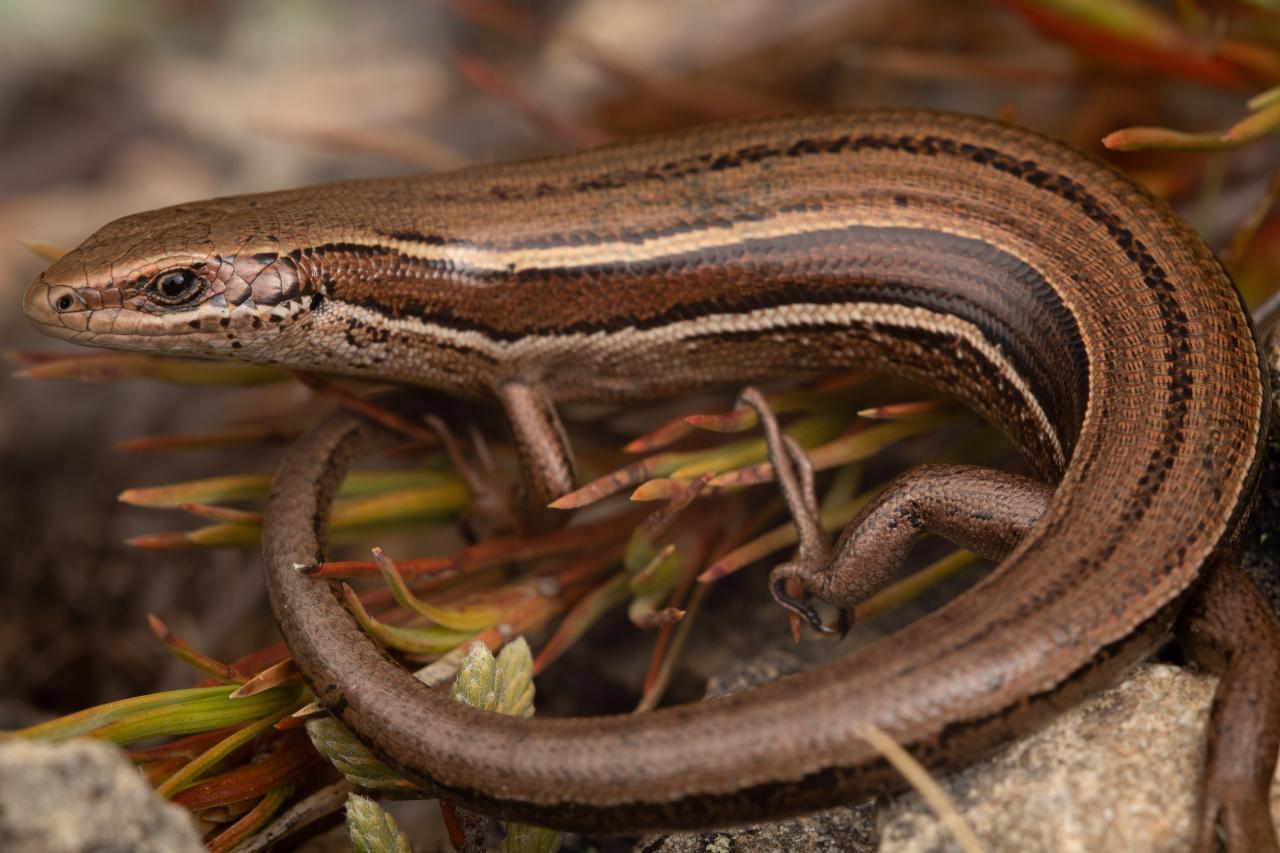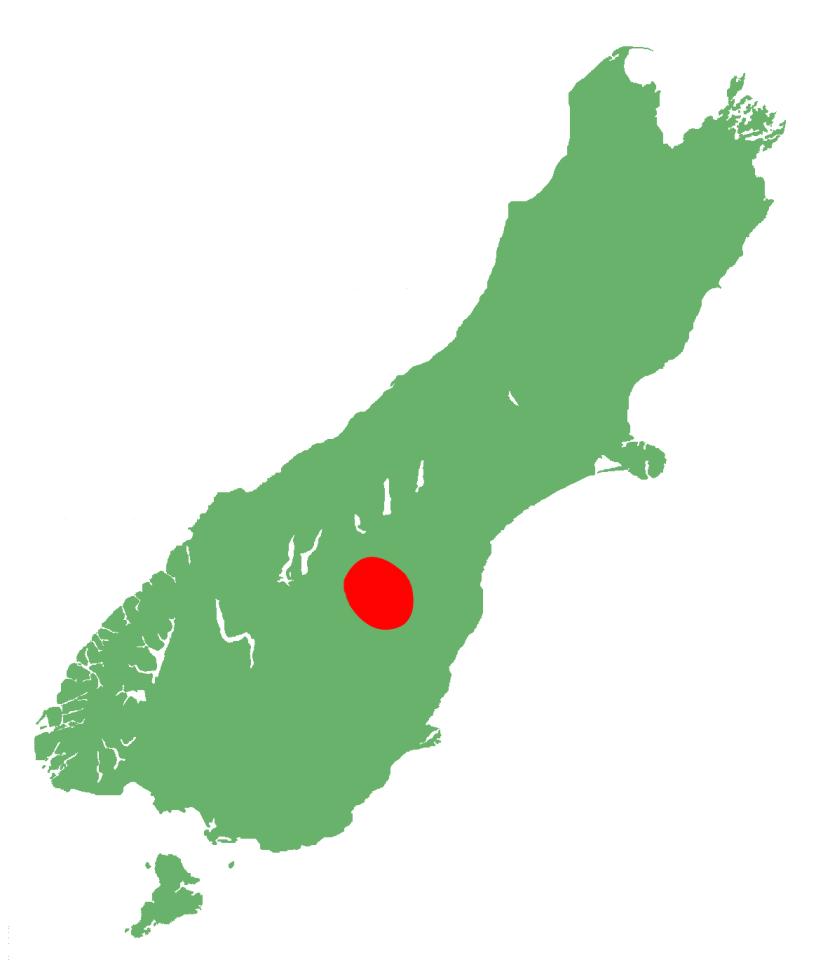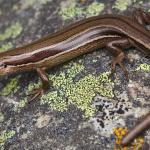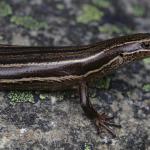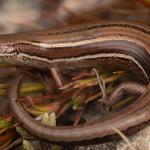- Home
- Herpetofauna Index
- Native
- Oligosoma Eludens
Oligosoma eludens
Rockhopper skink
Oligosoma eludens
(Knox, Chapple & Bell, 2024)
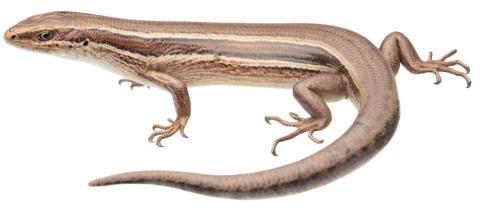
Length: SVL at least up to 65 mm
Weight: Unknown
Description
A highly active species of alpine skink that was discovered in 2018 and is superficially very similar to other sympatric species with a snout-vent-length (SVL) up to 65mm. Dorsal surface mid to dark brown, with dark and wide mid-dorsal stripe and smooth-edged pale cream dorsolateral stripes. Lateral surfaces bear a dark brown band bordered by thin pale cream stripes. Ventral surface uniform yellowish with a pale grey or yellowish throat. These skinks closely resemble McCann's skinks (Oligosoma maccanni) and southern grass skinks (Oligosoma aff. polychroma Clade 5), but rockhopper skinks are brown/chocolate-brown in colouration (vs. typically grey-brown), with thin, bright longitudinal stripes (vs. thicker/duller). They resemble Nevis skinks (Oligosoma toka) but rockhopper skinks typically have four supraocular scales (vs. three).
Life expectancy
Unknown.
Distribution
Currently known from several mountain ranges in Oteake Conservation Park (North Otago).
Ecology and habitat
Rockhopper skinks are diurnal, terrestrial, and saxicolous. These highly active skinks inhabit alpine areas (>1000 metres) and are associated with vegetations islands and the edges of scree/talus. They are most frequently seen in and around Dracophyllum shrubs and seek refuge in these, under stones, and in scree/talus (pers.comm Samuel Purdie).
Social structure
Unknown. However, they are known to coexist with several other species of skinks, which have superficially similar niches. These include southern grass skinks (Oligosoma aff. polychroma Clade 5), McCann's skinks (Oligosoma maccanni), and Nevis skinks (Oligosoma toka) (pers.comm. Samuel Purdie).
Breeding biology
Unknown.
Diet
Most likely feeds on invertebrates and possibly the fruits of native shrubs.
Disease
Unknown.
Conservation strategy
Classified as At Risk: Declining. These fascinating lizards were only discovered several years ago and known from a single location. However, several new populations have been identified and they are now known to have a relatively large distribution.
Interesting notes
Rockhopper skinks were discovered in 2018 by herpetologist Tony Jewell and named after their ability to quickly leap across rocks. While these skinks are superficially very similar to several other sympatric species, Tony Jewell was able to distinguish them based on minute morphological differences. Genetic results subsequently identified that they were markedly divergent from their closest relative, the small-eared skink (Oligosoma stenotis).
References

